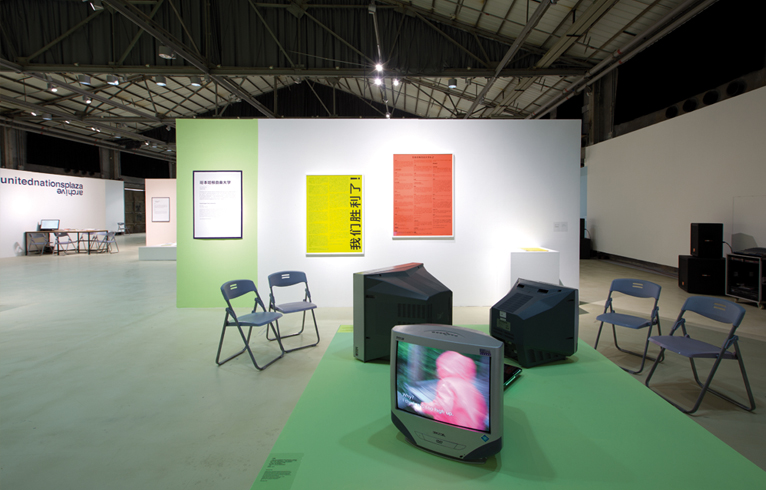LITTLE MOVEMENTS: SELF-PRACTICE IN CONTEMPORARY ART
| February 8, 2012 | Post In LEAP 12

Although the majority of the research that culminated in the “Little Movements” exhibition revolves around Chinese contemporary art, the three young researchers-cum-curators—Liu Ding, Carol Yinghua Lu, and Su Wei—do not attempt to uncover or define any so-called special Chinese characteristics in their subjects. Instead, they opt to adopt a global view of art events, a choice that stands out in the exhibition. Each of the 17 case studies is presented within the thematic framework of “self-practice.” The researchers try their best to shield the case studies from as well as to avoid disruptive tendencies within contemporary art, such that all of the descriptions, objects, pictures, and films focus exclusively on the cases studied. The result of this intensive focus is that the cases appear different from each other only in terms of diversity of practice; their otherwise, countryspecific cultural dissimilarities are de-emphasized. When the curators strive to express “self-practice” as a universal, conscious behavior, they deny any connection between ideology and the oft-heard discourse characterized by an emphasis on the unique conditions of China, despite any rhetorical similarities.
Certainly, we must acknowledge that without the dramatic changes within Chinese contemporary art in recent decades, the research of “Little Movements” would have been without an opportune opening. Cases chosen by the researchers include the Zhuhai Symposium, the ’85 New Wave, as well as They, the underground literary magazine from Nanjing. Re-evaluating these happenings over two decades on seems to confirm the existence of the “slow impact” of “Little Movements.” However, these two cases did not happen within the “contemporary system.” In fact, their participants expressed a yearning for the establishment of such a system. That desire, laid bare, was one of the body, a spontaneous behavior that was the result of longterm suppression, not necessarily consciously formed. In fact, the “self-practice” studied by “Little Movements” was a direct response to the contemporary art system itself—a kind of system that permeated and domesticated individual ideologies in the guise of a profession, whose effect and impact are more complicated and obscure than direct political oppression. Therefore, the self-reflective questions posed by “Little Movements” have a critical impact.
Without a doubt, the research of “Little Movements” is a long-term process. The researchers themselves have expressed the same opinion, namely that the exhibition and accompanying book of essays represent only a beginning for this research project. The researchers pledge to continue the project, adhering to a slow, marathonlike research method. It is only after having read the research essay collection, that one may understand how much groundwork remains.
In the book, there is an introductory essay for each case study, written by an art professional uninvolved with the case in question. Writing about domestic cases, contributors often take an objective stance, but foreign case studies are approached with greater caution, described using rather pedestrian language. This difference in attitude may be contributed to the length of time spent on each case study and the depth of research. For domestic cases the researchers conducted group discussions. They filmed these face-to-face dialogues with participants, and this footage was shown during the exhibition. But a similar record of research does not accompany the foreign cases. Of course, all of this can be added in the future. But it is worth mentioning here because the goal of “Little Movements” is not limited to showing the self-awareness of self-practice, but rather to make it the subject of research and reflection. In other words, criticism of the case studies or of “Little Movements” itself will help this research project move in a deeper, more meaningful direction. Sun Dongdong (Translated by JiaJing Liu)

